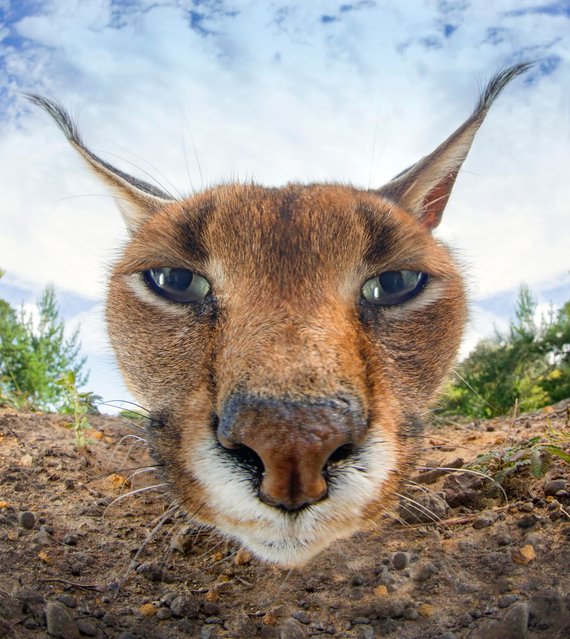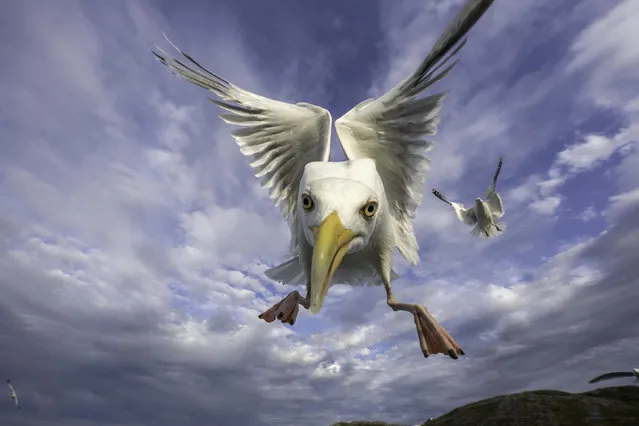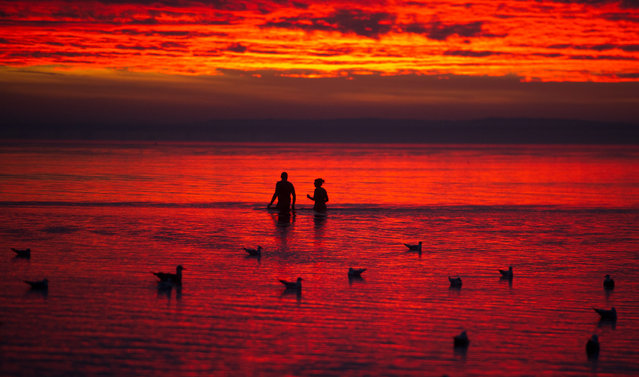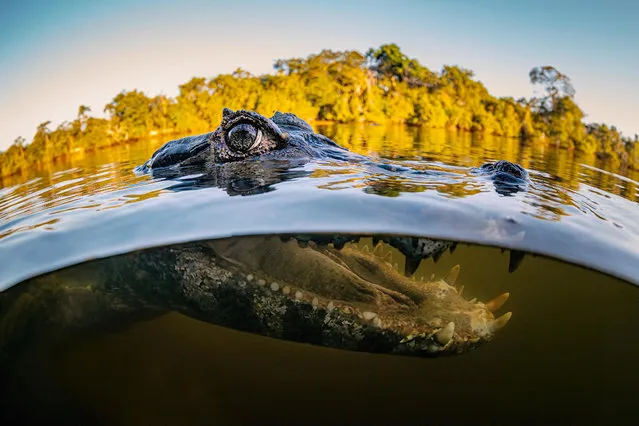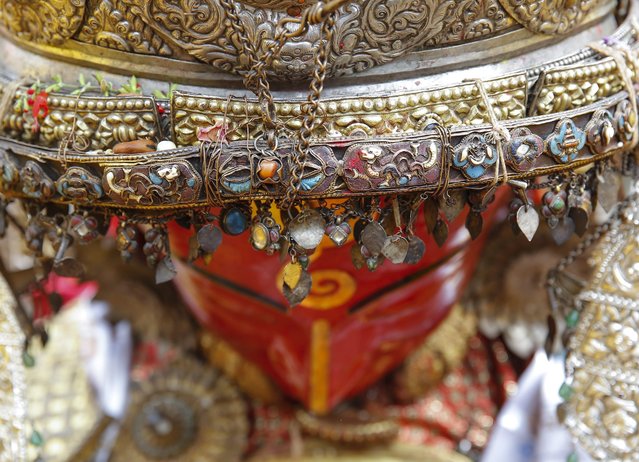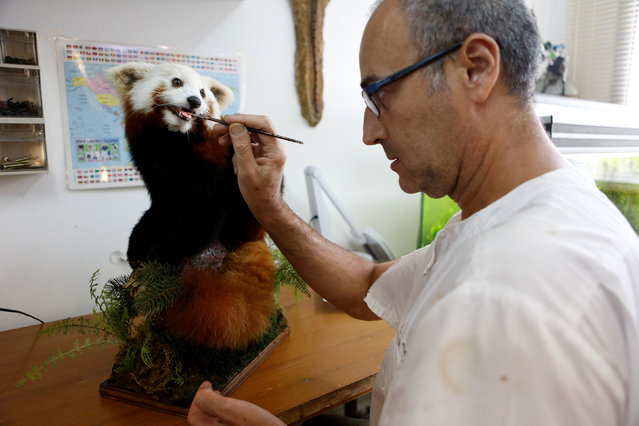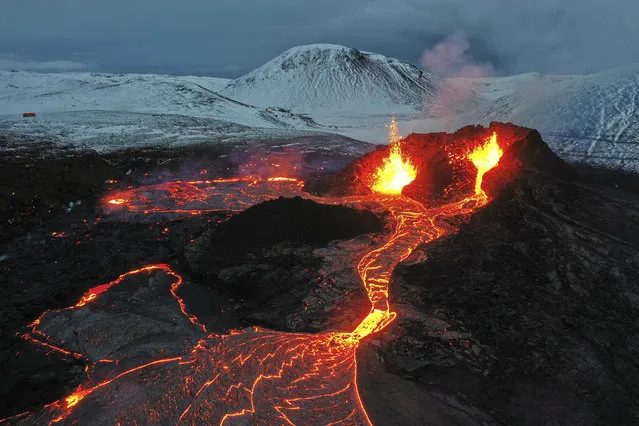
Lava flows from an eruption of a volcano on the Reykjanes Peninsula in Iceland on March 28, 2021. A week on, big crowds of Sunday hikers flocked to the Fagradalsfjall area to see up close Iceland's latest volcano eruption, as the gentle lava flow allowed people to get close to he eruption some 40 km west of Iceland's capital Reykjavik. (Photo by Halldor Kolbeins/AFP Photo)
21 Apr 2021 10:19:00,post received
0 comments

